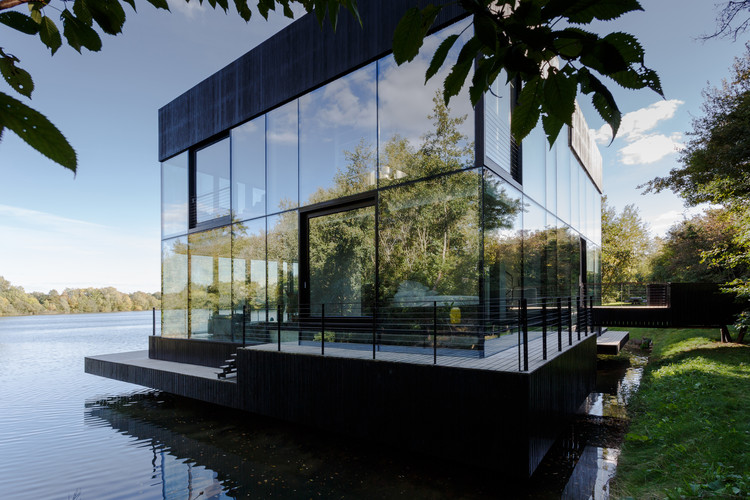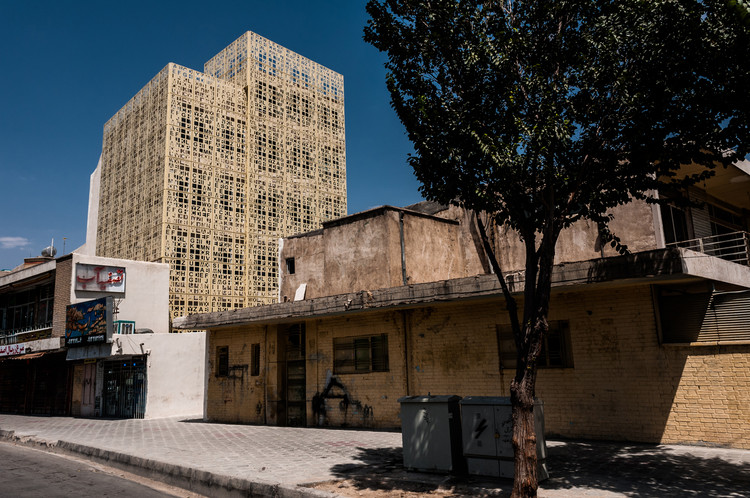AD Classics Rachofsky House Richard Meier - Partners
2012-01-13 01:00
架构师提供的文本描述。拉霍夫斯基大厦最令人满意的地方是它不是博物馆。没有真正的理由不应该这样做,考虑到众多的游客和学校的实地考察频繁的11,000平方英尺,三层楼的建筑一周又一周。但是众议院仍然是一个100%的私人住宅,仍然由拉霍夫斯基先生拥有,并由一小部分工作人员经营。这一切都为参观者提供了一种非常独特和个人的体验,因为房子的亲密无间不仅丰富了与艺术的互动,而且减少了形式上的压力,可以对空间进行更大的探索,并对建筑细节有更多的欣赏。
Text description provided by the architects. The most satisfying part of the Rachofsky House is that it is not a museum. There is no real reason why it shouldn’t be, considering the multitude of visitors and school fieldtrips that frequent the 11,000 square-foot, three-story building week in and week out. But the House remains a 100% private residence, still owned by Mr. Rachofsky and operated by a small staff. This all lends to a very unique and personal experience for the visitor, because not only does the intimacy of a house enrich one’s interaction with the art, but the lessened formal pressure allows for greater exploration of space and more appreciation to the architectural detail.
霍华德·拉霍夫斯基(Howardrachofsky)出生于得克萨斯州的达拉斯,他在股票市场上的交易使他的地位有所提高。到了20世纪80年代中期,他被广泛认为是华尔街最杰出的人物之一,当时他还在达拉斯的一家小办公室工作。他第一次接触理查德·梅尔(RichardMeier),是因为他爱上了位于佐治亚州亚特兰大的高级博物馆,开始为他设计一个家。最初的拉霍夫斯基住宅是设计出来的,但从未实现过像现在真正的拉霍夫斯基住宅所在地区那样大得多的项目。
Howard Rachofsky is a native of Dallas, Texas who rose to significance through his trading on the stock market. By the mid 1980’s, he was widely considered one of the most prominent men on wall street, while still working out of a small office in Dallas. He first approached Richard Meier about designing a home for him after falling in love with his High museum in Atlanta, Georgia. The original Rachofsky house was designed but never realized as much larger project on an area of land close to where the actual Rachofsky house sits now.
1996年完工后,拉霍夫斯基在那里住了几年,然后结婚,搬到了该地区另一栋房子(由达拉斯传奇人物莱昂内尔·莫里森(Lionel Morrison)设计),更适合家庭生活。正如人们所能想象的那样,一个三层楼、一间卧室的单身汉公寓/艺术画廊的可行性在妻子和孩子的加入中失去了。
After completion in 1996, Mr. Rachofsky lived there for only a few years before getting married and moving into a different house in the area (designed by Dallas legend Lionel Morrison) that was more suitable for family life. As one could imagine, the viability of a three-story, one bedroom bachelor pad/art gallery is lost in the addition of a wife and children.
这座房子位于3.2英亩的土地上,除了一个富丽堂皇的后院,还有一个游泳池和各种特定地点的雕塑,可以沿着车道走到房子所在的高架平台上。在任何时候,这座房子都在展出拉霍夫斯基先生收集的700件重要的当代艺术品中的几十件作品。
The house is centrally located on 3.2 acres of land, allowing for a grand approach up the driveway to the elevated podium on which the house rests, in addition to a rich backyard containing a pool and various site-specific sculptures to discover beyond. At any given time the house is displaying scores of pieces from Mr. Rachofsky’s vast 700+ piece collection of important, contemporary artwork.
基本的编程布局围绕着3排列和一个X-Y轴的循环.前后入口在轴上有内/外环流,而不同的阶梯在轴上有垂直的内循环。此外,列行划分了房子的功能,并划分了更多的公共流通和私人空间。住宅的南端采用私人螺旋楼梯,允许直接进入主套房。除了卧室和巨大的主浴室外,三楼还设有健身房、两个阳台和一间办公室,就像盒子里的盒子一样“漂浮”在客厅上方。
The basic programmatic layout revolves around 3 rows of columns and an X-Y axis of circulation. The front and back entries are on axis with interior/exterior circulation, while the different stair sets are on axis with vertical, interior circulation. Furthermore, the column rows divide the house functions and delineate between more public circulation and private spaces. The southern end of the home utilizes a private spiral stair case that allows direct access to the master suite. Along with the bedroom and enormous his-and-hers master bathroom, the third floor also hosts a gym, two balconies, and an office that "floats" above the living room like a box within a box.
一个巨大的、长方形的东面似乎漂浮在房子前面的入口上方。无处不在的Meier格子白色铝板覆盖了外部,但与在主起居区域内发现的后立面上的玻璃量相比相形见绌。有趣的是,房子上的毛线和开口不是与外墙的网格排列在一起的,而是与房子内的墙和柱子对齐,这些墙和柱子是以3英尺长的平台网格为基础的。向北的悬臂楼梯变成了从地面到凸起的生活区之间的一个重要的过渡时刻,完全被玻璃所包围,留下一个漂浮在内部循环和由巨大的树木和湖面所创造的压倒性景观之间。
A large, rectangular Eastern façade seemingly floats above the entry on the front of the house. The ubiquitous Meier grid of white aluminum paneling covers the exterior, but pales in comparison to the amount of glazing found on the rear facade once inside the main living area. It is interesting to note that mullions and openings on the house do not line up with the exterior grid of the façade, but instead align with walls and columns inside the house which are based off of the 3-foot podium grid. The cantilevered stair to the North becomes a show-stealing moment of transition between ground level and raised living area, completely enveloped in glazing that leaves one floating between interior circulation and the overwhelming view created by the massive trees and lake outside.
 举报
举报
别默默的看了,快登录帮我评论一下吧!:)
注册
登录
更多评论
相关文章
-

描边风设计中,最容易犯的8种问题分析
2018年走过了四分之一,LOGO设计趋势也清晰了LOGO设计
-

描边风设计中,最容易犯的8种问题分析
2018年走过了四分之一,LOGO设计趋势也清晰了LOGO设计
-

描边风设计中,最容易犯的8种问题分析
2018年走过了四分之一,LOGO设计趋势也清晰了LOGO设计










































































